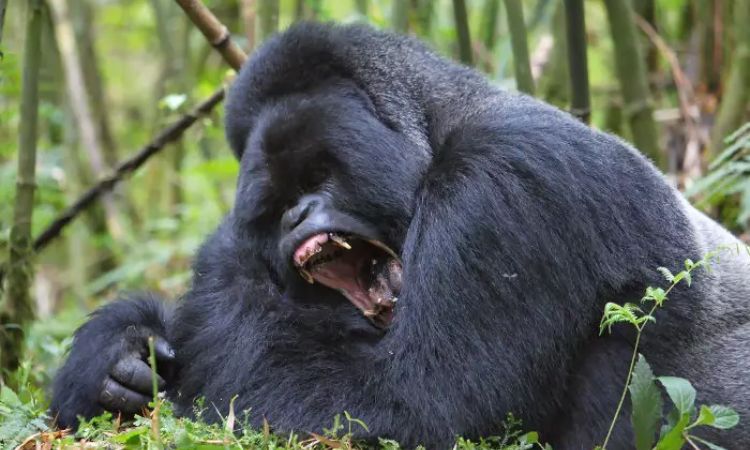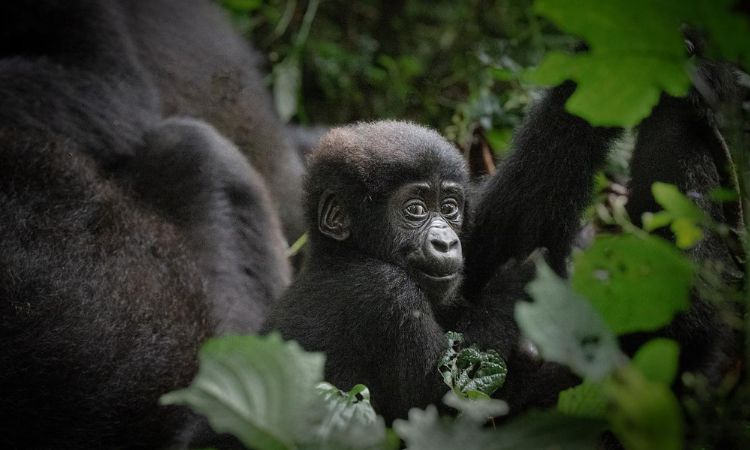How do silverback gorillas fight: A Fascinating Insight 2025
How do silverback gorillas fight: Silverback gorillas, the mature male leaders of gorilla troops, are among the most powerful primates, and their fighting behaviors are fascinating displays of strength, strategy, and social dynamics.
Understanding how do silverback gorillas fight requires exploring their physical attributes, social structure, reasons for fighting, fighting techniques, and the outcomes of these confrontations.
Physical Attributes and Their Role in Fighting
Silverback gorillas are the largest primates, with adult males weighing between 300 to 430 pounds (135–195 kg) and standing up to 5.6 feet (1.7 meters) tall when upright, though they typically move on all fours.
Their physical power comes from a robust skeletal structure, dense muscle mass, and adaptations suited for combat. Their arms are long and muscular, ideal for grappling and striking, while their thick skulls and strong jaws, equipped with large canines (up to 2 inches long), allow for powerful bites.
The silverback’s namesake silver-gray saddle of fur signals maturity and dominance, often intimidating rivals without physical conflict.
Their physicality shapes their fighting style. Silverbacks rely on brute strength, but their movements are calculated rather than reckless.
Their thick skin and fur provide some protection against bites and scratches, and their ability to stand bipedally during displays enhances their imposing presence.
These traits make silverbacks formidable, but fights are often about minimizing injury while asserting dominance, as severe injuries can weaken their ability to lead or survive.

Social Structure and Reasons for Silverback Gorilla Fighting
Silverback gorillas live in cohesive social groups called troops, typically consisting of one dominant silverback, several females, their offspring, and sometimes subordinate males.
The silverback’s primary role is to protect the troop from threats, including rival silverbacks, predators like leopards, or human encroachment. Fighting usually occurs in specific contexts:
- Territorial Defense and Group Takeovers: Silverbacks fight to defend their troop or to take over another troop. Rival silverbacks may challenge a dominant male to steal females and form their own group. These fights are high-stakes, as losing can mean exile or death.
- Maintaining Dominance Within the Troop: Silverbacks may face challenges from younger males (blackbacks, aged 8–12 years) within their group. These fights establish or reinforce the hierarchy.
- Protection from External Threats: While rare, silverbacks may fight predators or humans to protect their troop. These encounters are less about ritualized combat and more about survival.
- Competition for Mates: During mating season, silverbacks may clash to secure or defend access to females, especially if a lone male attempts to lure females away.
Fights are not daily occurrences. Silverbacks prefer to avoid physical conflict through displays of power, as fighting risks injury and energy depletion.
Their social structure incentivizes maintaining group cohesion, so conflicts are often resolved through intimidation rather than violence.
Fighting Techniques and Behaviors of the Silverback Gorilla
How do silverback gorillas fight? Silverback gorilla fights are a mix of ritualized displays, posturing, and, when necessary, physical combat. The process typically escalates through stages, with physical fighting as a last resort. Here’s how it unfolds:
1. Vocal and Visual Displays
Before physical contact, silverbacks engage in displays to intimidate opponents and avoid direct confrontation. These include:
- Hooting and Roaring: Silverbacks emit deep, resonant hoots that escalate into roars, audible over long distances. These vocalizations signal strength and warn rivals to back off.
- Chest-Beating: The iconic chest-beating involves rapid, alternating slaps on the chest with cupped hands, creating a loud, drumming sound. This display showcases physical vigor and can intimidate rivals without contact.
- Posturing: Silverbacks stand upright, puff out their chests, and bare their canines to appear larger and more threatening. They may also charge short distances, stopping short of contact, to test the rival’s resolve.
- Vegetation Destruction: They break branches, uproot plants, or slap the ground to demonstrate strength and aggression.
These displays are energy-efficient ways to assess an opponent’s strength and commitment. Often, a weaker silverback will retreat after such displays, avoiding physical combat.
2. Physical Combat
If displays fail, silverbacks engage in physical fighting, which is intense but typically brief to minimize injury. Common techniques include:
- Biting: Silverbacks use their large canines to inflict deep wounds, targeting the head, neck, or limbs. Bites are a primary weapon, as they can cause significant damage quickly.
- Striking and Slapping: Using their powerful arms, silverbacks deliver heavy blows or open-handed slaps to disorient or injure opponents. These strikes can bruise or break bones.
- Grappling and Wrestling: Silverbacks may lock arms or torsos, attempting to overpower each other through sheer strength. They use their weight to push or pin rivals to the ground.
- Charging and Shoving: A silverback may charge at full speed to knock an opponent off balance, often combining this with slaps or bites.
Fights are usually one-on-one, as group members rarely intervene unless the troop is directly threatened. Physical combat is fast-paced, lasting seconds to minutes, as prolonged fighting risks exhaustion or severe injury. Silverbacks aim to dominate quickly, forcing the rival to submit or flee.
3. Submission and Retreat
Fights often end when one silverback signals submission, typically by crouching, averting eye contact, or fleeing. The victor may pursue briefly to reinforce dominance but rarely kills the loser unless the threat persists. This restraint preserves energy and reduces the risk of injury that could compromise the silverback’s leadership.
Strategies and Decision-Making
Silverbacks are strategic in their approach to fighting. They assess their opponent’s size, strength, and behavior during displays to gauge the likelihood of winning.
A silverback may avoid fighting a stronger rival, opting to retreat with his troop to avoid losing females or sustaining injuries. Younger or less experienced silverbacks may take greater risks, especially lone males seeking to establish a troop.
Fights are also influenced by the stakes. A silverback defending his troop is more likely to fight aggressively than one challenging for a takeover, as losing his group means losing reproductive opportunities. Environmental factors, like dense forest terrain, can affect fighting, as silverbacks use trees or obstacles to maneuver or escape.
Outcomes and Consequences of Silverback Gorilla Fights
The outcome of silverback fights has significant consequences for the troop and the individuals involved:
- Victory: A victorious silverback reinforces his dominance, securing his troop’s loyalty and deterring future challenges. He may gain females from a defeated rival, increasing his reproductive success.
- Defeat: A defeated silverback may lose his troop, becoming a lone male or forming a bachelor group with other males. Severe injuries can lead to death from infection or inability to forage.
- Troop Dynamics: Fights can disrupt troop cohesion. If a new silverback takes over, he may kill infants sired by the previous male (infanticide) to bring females back into estrus, ensuring his genes are passed on.
- Injuries: Even winners may sustain wounds, such as cuts, broken bones, or infections, which can weaken their leadership or survival chances.
Ecological and Conservation Context
Silverback fighting behaviors are shaped by their environment, primarily the dense forests of Central Africa (mountain gorillas in Rwanda, Uganda, and the Democratic Republic of Congo; lowland gorillas in broader regions).
Habitat loss and poaching increase stress on gorilla populations, potentially leading to more frequent conflicts as troops compete for shrinking resources.
Conservation efforts, like those in Virunga National Park, highlight the importance of protecting gorilla habitats to maintain stable social structures and reduce unnecessary fighting.
Observations from Research and Media
Studies, such as those by primatologist Dian Fossey and the Gorilla Organization, emphasize that silverback fights are rare due to the effectiveness of displays.
Documentaries like Gorillas in the Mist and BBC’s Mountain Gorillas show that physical combat is a last resort, with most conflicts resolved through posturing.



